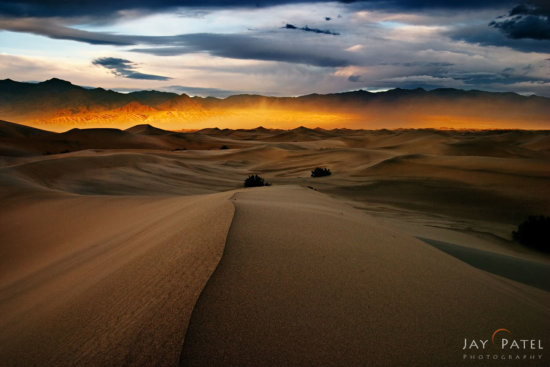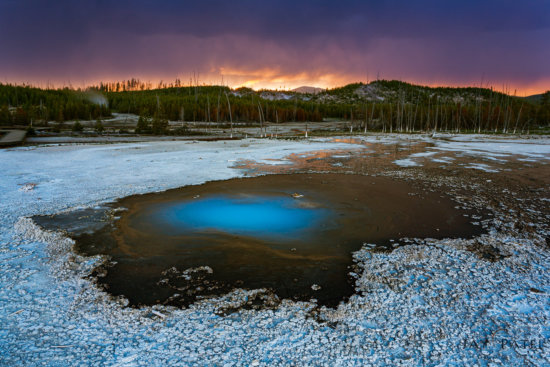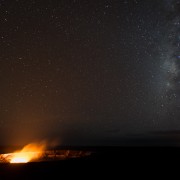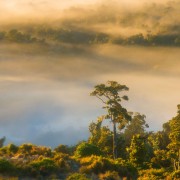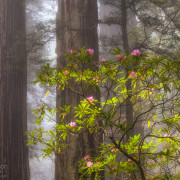Practical Landscape Photography Tips for shooting in Stormy Weather
For most people, stormy weather can be the ruination of an otherwise perfect vacation… but landscape photographers welcome storm clouds. Why? Because storm lighting is often dramatic and beautiful. So when the skies start to cloud over, pay attention! This is when things get really good!
We all know that golden hours can produce some breathtaking landscape photos, but there is more to landscape photography than just golden hours. Storms can produce dramatic light at all times of the day. This is the reason why a lot of landscape photography chase storms to capture mood and the drama created by the storms. I always check the weather and see if there is a potential to catch an approaching storm nearby.
Here are some practical landscape photography tips to help you capture the mood and drama created by a passing storm:
Landscape Photography with Spotlight Effects
Light is often best before or after big storms – so watch the weather and be ready to shoot when the light is right. This is also one of the best times to catch the “Spotlight” effect. The “Spotlight” effect is created when you have sun peaking through the small opening during a heavy cloud cover. It illuminates just a small portion of the landscape while leaving the rest of the landscape dark.
Spotlight effect can be created at any time of the day. However, landscape photography during this spotlight effect is not as easy as it sounds. During windy conditions, the spotlights created by the sun move around quickly and do not always fall where you want them to fall. It’s often a waiting game to catch the spotlight in a perfect place. I had to huddle for nearly an hour in the middle of a sand storm behind some bushes until the sun decided to show up and create a spotlighting effect on the mountains in Death Valley National Park in California.
Dynamic range can also pose a challenge while capturing landscape photos with spotlight. The area illuminated by sun is often very bright while the rest of the area under the overcast skies is dark. We use histogram to make sure that we have captured all the details in both the highlights and shadows.
Catch some Rainbow after the storm
We love to catch rainbows… and passing storms give us fantastic opportunities to photograph some of the most breathtaking ones. Rainbows are created by scattering of intense sunlight by the falling raindrops.
When everything is wet, use a circular polarizer filter to cut through glare. It cuts through the glare and rewards you with rich, beautiful colors. But be forewarned… if you are photographing a rainbow, be careful when using your circular polarizer. A rainbow is a result of scattered light and the circular polarizer will erase it from your photo if you set the circular polarizer incorrectly. The double rainbow below was captured with the help of a circular polarizer (rotated correctly) in Hilo, Hawaii. So it’s important to know how to use a circular polarizer properly.
Landscape photography with rainbows often involves shooting in rain from the passing storm. So it is best to protect your camera and lenses from rain and make sure that the landscape photos you captured are free from the water droplets.
Capture dramatic Sunbeams
I love to photograph sunbeams like the ones you see in the image from Horseshoe Bend in Arizona. To capture intense sun beams like these, you need three cooperating elements: a dark stormy background to make the sun beams stand out and airborne particles such as mist, fog, or smoke to help scatter the sunlight and make the sunbeams visible. Without these conditions, you simply won’t capture sunbeams.
Camera exposure can be tricky when trying to capture sunbeams because of extreme dynamic range. In most cases you will have to use exposure bracketing to capture all the details, highlights and shadow. These bracketed exposure can then be combined in Photoshop or Lightroom to produce the final landscape photo with dramatic sunbeams.
Landscape photos like these often require a quick setup because the light beams don’t always last very long. However, when you can capture them effectively, those beams can turn an ordinary landscape into a contest-winner!
Create Mood in your Landscape Photos
A dark and moody atmosphere created by heavy storm clouds makes for some fantastic landscape photography. This dramatic mood can be enhanced if the storm occurs over the right location with interesting foreground or unique geology. We were fortunate enough to catch this approaching storm during our hike in the Norris Geyser Basin in Yellowstone National Park in Wyoming. I took a few quick shots and then retreated to the shelter as the storms grew closer.
Your camera setting and post processing can be used to add to the light and drama created by a stormy landscape. Using a 2/3 f-stop under exposure in Photoshop or Lightroom will often add a dark mood in your stormy landscape. In the above photo from Grand Tetons National Park, I chose a landscape photography composition so that the storm light would be reflected in the small pool in the foreground. This allowed me to create a point of interest in an otherwise monotonous foreground as the storm overhead was just breaking up. During post processing, I used selective adjustment in Photoshop to darken the green tones around the pond to add mood and drama to my landscape photo.
Capture motion using Long Exposure
Storm conditions are often associated with high wind. One of our favorite things to do during a storm is to use long exposure to capture the motion of the wind in our landscape photos. This requires a good, stable tripod. If the wind conditions are too high, we spread the legs of our tripod to keep it closer to the ground or we hang our camera bags under it to give the tripod additional stability.
You can also use Neutral Density Filters (ND Filters) to reduce the amount of light entering the camera and get the slow shutter speed needed for long exposure landscape photography. It is important to include a strong sharp element in your landscape photography composition to contrast with the moving elements. This contrasting element will create a stronger photography composition. This is exactly what Varina did when she captured this stormy landscape photo from Glacier National Park in Montana.
Safety Considerations for Landscape Photographers
While there is no doubt that storm conditions can produce some breathtaking landscape photos, it is very important to stress that safety comes first. Stormy weather can also be very dangerous and can easily sneak up on you. Lighting, hail, high winds or a sudden drop in temperature can produce dangerous conditions for a landscape photographer. While we have never been injured in a storm, we have lost gear on more than one occasion during storm conditions. Make sure you check the weather reports and take appropriate precautions when you go out to shoot in bad weather. Rain and wind can also damage your equipment. We always carry protective gear with us for our photography equipment when we on location.
So next time you are out in the field look for passing storms to create some fantastic landscape photography opportunities for you. Check the weather forecast regularly and try to place yourself at the right time and right place so you can capture the mood and drama in your landscape photos.


